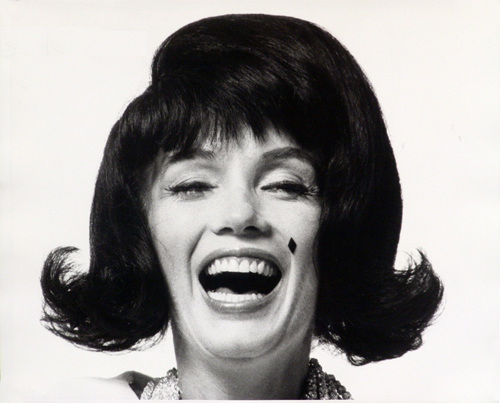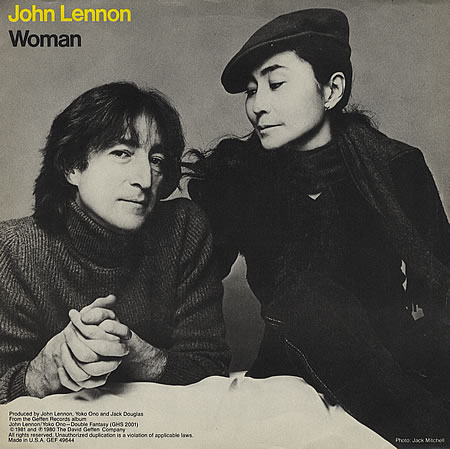




 Marilyn Monroe in Jackie wig. Photos: Bern Stern, 1962
Marilyn Monroe in Jackie wig. Photos: Bern Stern, 1962
MARILYN AND JACKIE’S 11-YEAR ITCH
Text by Wendy Leigh
The Observer, Sunday 22 June 2003
At first glance they couldn’t have been more different. Jackie, the pristine American princess born into East Coast high society, who glided effortlessly into marriage with multi-millionaire’s son Senator John Fitzgerald Kennedy, and then into the White House as First Lady. And Marilyn, the bleached blonde bombshell from the wrong side of the tracks, illegitimate daughter of a mother who went insane and a father she never knew, with a sexual radiance so white hot that it catapulted her from pleasuring ageing Hollywood tycoons, on to the silver screen and into immortality.
Yet while researching my novel, The Secret Letters of Marilyn Monroe and Jacqueline Kennedy, I discovered that, like many wives and mistresses who share the same man, in reality Marilyn and Jackie were sisters under the sheets. It became clear to me that Marilyn was Jackie’s equal and that her illicit affair with Kennedy was significant. For years, that affair has been was painted as brief, fumbling – a one-night stand which might, mainly because of Kennedy’s fascination with Marilyn’s dizzying status as America’s reigning sex goddess, have only temporarily transcended his usual hit-and-run amorous encounters.
But their liaison was far from brief. The future President met the actress in 1951, at the house of Marilyn’s agent and Jack’s friend, Charles K Feldman. Kennedy was an up-and-coming senator, a bachelor playboy whose political campaign was funded by his father’s vast fortune. Marilyn was on the brink of stardom. Their affair was to last 11 years, ending with one final meeting in Manhattan’s Carlyle Hotel just hours after Marilyn had sung ‘Happy Birthday, Mr President’ in such an erotically charged way that the columnist Dorothy Kilgallen noted: ‘It seemed like Marilyn was making love to the President in front of 40 million Americans.’
If their affair lasted for 11 years, it was also far from superficial, as a cache of letters from Kennedy to Marilyn, now in the possession of Marilyn’s heirs, attests. Monroe was Kennedy’s long-term mistress, a serious rival to his wife.
Yet below the surface, Marilyn and Jackie shared many similarities. Growing up, they both adored Gone With the Wind, worshipped the Empress Josephine and idolized Clark Gable – Marilyn kissing his picture goodnight as a child, fantasizing that he was her father, and Jackie insisting that her own father, Jack Bouvier, was Gable’s double. Both women retained whispery, baby-doll voices as adults, often playing ‘Daddy’s girl’ with the men in their lives. Even when she was in her late fifties, Jackie simulated a little-girl quality around Maurice Templesman, the last man in her life. And Marilyn actually addressed her third husband, Arthur Miller, as ‘Daddy’. Both had difficulties conceiving a child.
They shared a love of salacious gossip. According to Truman Capote, Jackie was set on discovering what a mutual friend was like in bed. Capote was also Marilyn’s confidant of choice, revealing to him how she witnessed Errol Flynn playing ‘You Are my Sunshine‘ on the piano with his penis.
Naturally, their jetset lifestyles rocketed Marilyn and Jackie into the same orbit. When Jackie met Hungarian actress Zsa Zsa Gabor, Gabor gave her skin-care advice. Marilyn met Zsa Zsa in less felicitous circumstances, on the set of All About Eve, in which she starred with George Sanders – with Gabor, his then wife, ever present. Zsa Zsa’s reasons were clear. She later recalls George telling her: ‘The doorbell rings and there stands Marilyn in a beautiful sable coat. I asked her what she wanted and she opened the coat. Marilyn was stark naked underneath. Who am I not to make love to a woman like that?’
Marilyn and Jackie each met and flirted with Krushchev and Sukarno; Aristotle Onassis acted as a go-between for Prince Rainier when Rainier wanted to marry Marilyn. And while Onassis never met Marilyn, he did, of course, meet Jackie, whereupon, according to Onassis’s biographer, Willi Frischauer, ‘he compared her to a diamond – cool, sharp at the edges, fiery and hot beneath the surface’.
Jackie and Marilyn both favoured Chanel; Jackie wore Chanel designs, Marilyn slept in Chanel No 5. Their hairdresser of choice was Kenneth, who created Jackie’s trademark bouffant, and advised Marilyn to dye her pubic hair blonde so that it didn’t show through her clinging clothes. Marilyn and Jackie shared a number of lovers and admirers. British actor Peter Lawford, Jack Kennedy’s friend and sometime pimp, was one of them.
Robert Mitchum also appealed to both women. Jackie enthused that he had always been her favourite movie star. Marilyn, who co-starred with Mitchum in River of No Return, said: ‘Mitchum is one of the most interesting, fascinating men I’ve ever known’, but drew the line at a threesome with Mitchum and his stand-in, Tim Wallace: ‘Ooh,’ said Marilyn, ‘that would kill me.’ ‘Well, nobody’s died from it yet,’ Wallace snickered. ‘Ooh, I bet they have!’ Marilyn told him, ‘but in the papers they just say the girl died of natural causes.’
After Kennedy’s death, rumours raged that Jackie and Frank Sinatra had an affair. Their relationship dated back to the Inauguration Ball, to which Frank escorted Jackie. Watching the footage of that night, the chemistry between them is palpable. Marilyn, in turn, had a sporadic affair with Sinatra. One night, according to her maid, Lena Pepitone: ‘She absent-mindedly wandered downstairs with nothing on to look for Frank. She said that she was lonely and just wanted to talk to him. After walking through one empty room after another, she finally opened the door to the smoking-room where the card game was in session. Frank was livid. “He yanked me to one side and ordered me to get my ‘fat ass’ back upstairs.” How dare she embarrass him in front of his friends.’
Marlon Brando dazzled Marilyn and Jackie. He met Marilyn in 1955; there was a strong attraction between them; she called him Carlo, reporting that he was sweet and tender. In the late Sixties, Jackie had dinner with Brando at a Washington club and danced with him afterwards. According to one of Brando’s friends: ‘Jackie pressed her thighs against his and did everything she could to arouse him. They talked about going away on a skiing vacation together, just the two of them. Brando could feel Jackie’s breath on his ear. He felt Jackie expected him to make a move, to try and take her to bed.’ However, having drunk too much, Brando was fearful he might be impotent, so made his apologies and left.
Apart from sharing President Kennedy’s bed, Marilyn and Jackie both had affairs with his brother, Bobby. Jackie’s affair with Bobby, in the years following Jack’s assassination, has only recently been revealed by C David Heymann in his biography RFK . ‘Socialite Mary Harrington was staying at a house next to the Kennedy compound in Palm Beach in 1964. “I was looking out a window on the third floor and there was Jackie, sunbathing in the grass wearing a black bikini bottom with no top. Then Bobby, wearing a white swimsuit, emerged from the house and knelt by her side. As they began to kiss, he placed one hand on her breast and the other between her legs. After a few minutes, she stood up and wrapped a towel around her. Together, Bobby and Jackie disappeared into the house.'”
Ultimately, it appears that the wife was as libidinous as the mistress. Yet neither of them was as highly sexed as the man in their lives. Jack Kennedy insisted that if he didn’t have sex on a daily basis he would get a headache, and claimed: ‘I’m not through with a woman until I’ve had her three ways’. But according to Jackie’s friend, Peter Duchin: ‘Jackie was very, very romantic, but not sexy’, while Peter Lawford alluded to Marilyn’s ‘romanticism’.
Perhaps it is natural that, from the start, Marilyn and Jackie were enthralled by one another. When she was working as a young reporter in Washington, Jackie invariably asked men: ‘If you had a date with Marilyn Monroe, what would you talk about?’ And Marilyn’s fascination with Jackie was such that she even dressed as her for a Life magazine shoot, donning a black wig and pearls for the occasion.
When Marilyn died at the age of 36 in 1962, Jackie, the wronged wife, declared sombrely: ‘She will go on eternally.’ Jackie herself died on 19 May 1994, the thirty-second anniversary of the night on which Marilyn Monroe sang ‘Happy Birthday, Mr President’ to her lover, Jack Kennedy.
 Rainer Maria Rilke photographed by George Bernard Shaw, 1906
Rainer Maria Rilke photographed by George Bernard Shaw, 1906





















